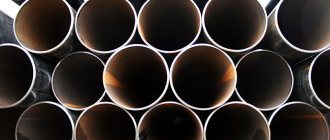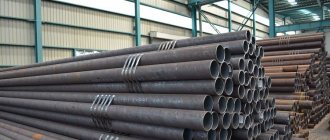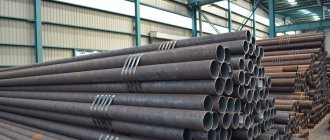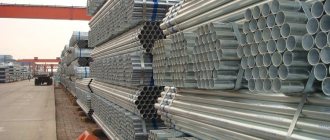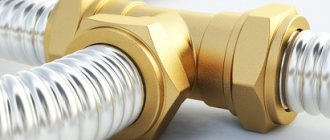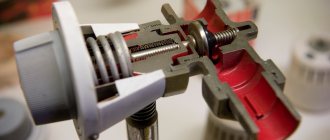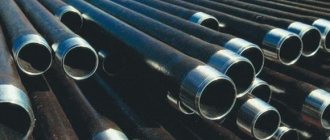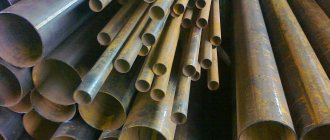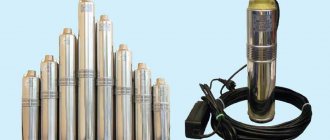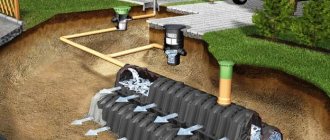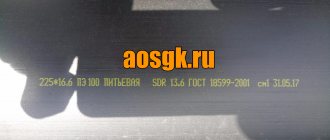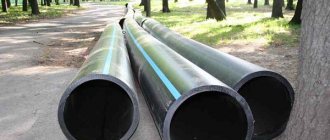Solid-drawn pipe is one of the most expensive types of rolled metal. This is due to the complexity of its production. The product is highly reliable and is manufactured in full compliance with standards. Seamless seamless pipes are widely used in the oil refining, chemical industries, aircraft and mechanical engineering, as well as in public utilities.
Seamless pipes are stronger than welded pipes, but are also more expensive
Pros and cons of seamless steel pipes
The scope of application of steel pipes is very wide, since the absence of seams affects the strength characteristics of the products - they become practically invulnerable. The seamless design is characterized by low linear expansion, which is caused by the influence of high temperatures, corrosion resistance and is not afraid of high pressures.
The degree of thermal conductivity depends on the material of manufacture and, as a rule, is at a good level. The seamless steel pipe has a perfectly smooth surface inside, which improves throughput. Compared to a welded product, the seamless design has much better strength and resistance to external influences.
Among the disadvantages of this type of rolled metal, one can note the lack of flexibility of thick-walled products, which can lead to certain difficulties when performing repair and construction work. In addition, the production of pipes requires expensive equipment, and the technology itself is very complex. In combination with the high cost of materials, this leads to an increase in production costs, so in some cases it is not practical to use such products.
Advantages
Naturally, the main distinguishing feature and advantage of solid pipes is the absence of any seams. This feature reduces the likelihood of damage and increases resistance to mechanical stress. Hot-rolled pipes made from thick metal sheets are highly resistant to corrosion. However, such products are not particularly flexible in the process of repairing or installing any structures.
This is of great importance, since the installation will not bring the desired result. Hot-rolled pipes are considered literally ideal materials for the construction of various communications. When using different types of connections, all kinds of structures and design structures can be created. This requires strict adherence to existing connection technologies and installation rules. Hot-rolled seamless products, due to their high strength characteristics, are excellent for equipping various types of systems with high internal pressure.
Seamless design: main types
Solid drawn steel pipe is classified depending on the wall thickness. In the case where the wall is larger in diameter, the seamless structure is called extra thick-walled. In addition, there are particularly thin-walled, thin-walled and simply thick-walled elements.
The wall thickness of one type of seamless pipe can reach 10% of the diameter
Note! The first type is characterized by a wall thickness of no more than 2.5% of the diameter, for the second - from 2.5 to five percent, for the third - from 5 to 10%.
There are also lightweight, reinforced and ordinary structures. Reinforced pipe options are characterized by increased corrosion resistance, and lightweight pipes are easy to bend. The most common seamless steel structure is available, but products can be produced from various alloys and non-ferrous metals. Pipes differ in manufacturing technologies. On this basis, cold- and hot-rolled products are distinguished.
Areas of use of seamless products
Thanks to its excellent strength characteristics, seamless pipe has found its application in a large number of sectors of human life, but the main one is the installation of highways for various purposes. In the gas and oil industries, such products are used to transport fuel.
The absence of a weld seam and an absolutely smooth surface inside allows the use of such elements in drinking water supply pipelines. The seamless design makes it possible to install pipelines that transport aggressive substances and are under high pressures and elevated temperatures.
The nuclear industry cannot function without such pipes. They are used in ship, carriage, aircraft, tractor and mechanical engineering, for example, to solve the problem of transmitting shaft rotation. Seamless hollow seamless construction is necessary in the construction of coal mines and drilling rigs.
It is advisable to use it under particularly difficult operating conditions, when ordinary metal and welding seam may not withstand. Monolithic products have also found themselves in the defense industry.
Seamless pipes are indispensable for pipelines operating in difficult conditions, under high pressure or temperature
What are the varieties?
Pipes of this type are manufactured using several technological methods.
Products are:
- seamless;
- boiler rooms;
- electric welded;
- profile.
Each listed type of high-pressure product is subject to serious technological requirements. They are spelled out in a number of documents.
These include such state standards:
- GOST 3262 75;
- GOST 8696 74;
- GOST 20295 85;
- GOST 10705 80;
- GOST GOST 10706 80;
- GOST 11017 80.
The products in question undergo additional processing before being sent for sale.
First of all, it is coated with an anti-corrosion coating (galvanization).
Some varieties are coated with insulating materials. Such as varnish, paint or polymer coating. The production process method is:
- Welded. It is carried out by bending sheet metal and welding it along the length of the joint.
- Seamless. The manufacturing process is carried out by pressing. For this purpose, a steel billet is rolled.
- Cast. It is made by casting metal on a special machine.
Welded structures are produced in two ways: electric welded and cold-deformed.
Low carbon steel is often used as a raw material. Seamless high-pressure pipes are made using hot or cold rollers. It is this type of product that is most in demand on the market.
Standardized product sizing requirements
The requirements for cold-formed products are set out in standard 8734 of 1975. According to this document, seamless pipe can be produced in unmeasured or measured lengths. With the first option, this characteristic is within the range of 4.5-9 meters, with the second - from one and a half to 11.5 m. Maximum deviations - no more than 1 cm.
By agreement with the customer, pipes of measured length can be produced from 4 to nine meters with a constant value of maximum deviations. Products of multiple measured lengths are produced in sizes from one and a half to 9 m.
Note! Typically, products are manufactured in accordance with wall thickness and outer diameter, however, depending on customer requirements, you can focus on other characteristics, for example, wall thickness and both diameters or wall and inner diameter.
At the customer's request, maximum deviations can also be combined. For example, a product is manufactured with normal precision in diameter, but with increased precision in wall thickness.
Manufacturers are required to ensure that neither the thickness difference nor the ovality of the pipes exceeds the limits of permissible deviations. The standard also gives curvature values. For products with a cross section of up to 8 millimeters, it should not be more than 3 mm, within 8-10 mm - more than 2 mm per 1 m of length, more than 10 mm - more than one and a half millimeters.
Tips for choosing
to choose seamless steel products if you know the basic parameters of the future pipeline and its purpose . There are often cases when a home owner, who does not have the knowledge and skills of a builder, decides to independently replace the pipeline in the house or install a heating system in the built house. How to choose a seamless pipe in such a situation?
If you plan to repair, simply measure the outer diameter of the old pipes with a ruler . Building a heating system in a house yourself is much more difficult. It is important to choose the diameter for uniform heat distribution throughout the house.
There is an equation for determining the internal diameter (DN) of the medium flow (hot water):
- D – diameter;
- V – medium flow velocity;
- Q – heat flow;
- DT – difference t˚ at the input and output.
When choosing a round metal profile, it is important to pay attention to steel : the higher the carbon content in it, the harder its weldability.
Each
batch must be marked , which must contain information about the production date, manufacturer, batch number, and product sizes.
Finally, the main point before purchasing metal products is a competent approach to choosing a seller. Builders prefer to purchase it from trusted suppliers with their own warehouse , who load rolled metal from the plant. Otherwise, you can buy rolled steel from small trading organizations and overpay.
There is a possibility of turning to unscrupulous suppliers who, under the guise of a new pipe, sell seamless, but refurbished pipes . Therefore, it is worth going to the warehouse and looking at the products with your own eyes.
What do you think of this article?
Seamless products for special purposes
There are seamless pipes for special purposes, which are produced in accordance with the 9941 standard from 1981. This type of rolled metal is also characterized by measured, multiple and unmeasured lengths. Wall thickness varies from 0.3 to 24 millimeters, diameter - from 5 to 250 mm.
Seamless pipes are produced in measured and unmeasured lengths according to standards
The possible curvature of the structure is determined depending on the parameters. For example, for products with a cross-section above 5 mm and a wall of half a millimeter, this figure can be no more than 1 millimeter per meter, and for a diameter of more than 15 mm and a metal thickness of less than 0.5 mm - up to 2 mm.
The edges of the rolled metal must be free of defects and cut at 90 degrees. At the consumer's request, the ends can be chamfered for welding. This is acceptable when the metal thickness is more than 5 mm. In this case, the material of manufacture must meet special requirements. For example, the chemical composition of steel is regulated by state standard 5632, and the portion of harmful impurities (sulfur) cannot exceed 0.02%.
The surface of the pipes should be characterized by the absence of sunsets, shells and cracks. The exception is for products that have not been cleaned. In this case, isolated stains, small dents or scratches are allowed on them, but the influence of these defects on the diameter and wall of the element is excluded.
Galvanizing
A black steel pipe that has to work in a corrosive environment will become rusty within a few hours. Upon contact with water or aggressive chemicals, the surface oxidizes and gradual destruction begins.
This is very obvious in water supply and heating systems - after 10-15 years they fail. To extend the life of hardware products in difficult conditions, surfaces are galvanized. At the same time, GOST does not divide pipes into black and galvanized - the assortment remains unchanged, the only difference is in the marking of finished products.
There are three methods of applying a protective coating:
Hot
The finished pipe is immersed in a special bath with zinc heated to the melting temperature, which covers its outer and inner walls with a continuous layer. GOST for galvanized steel provides for the use of three grades of zinc from Ts0 to Ts2 with the addition of alloying elements (aluminum, lead, etc.).
Cold
Cheaper technology, similar to surface painting. It is also the least reliable. The weight of electric-welded steel pipes with zinc coating is 3% higher than that of products without an anti-corrosion layer.
Galvanic
An economical method in terms of non-ferrous metal consumption, which guarantees reliable adhesion of the coating to the surface under the influence of current without sagging or drips of zinc.
WATCH THE VIDEO
Galvanized pipes have the same scope of application as black pipes. That is, they can be replaced and will last much longer. The only problem is connecting the rental into a one-piece structure. To do this, so that welding of galvanized pipes does not damage the protective coating, it is performed under a layer of flux. Steel pipes are used in all industries.
Standards for hot-formed pipes
Hot-deformed seamless products must fully comply with the standards specified in state standard 8732 of 1978. This document contains tables with possible product sizes. Hot-deformed products of measured/unmeasured length are manufactured from 4 to 12.5 meters. In the case of multiple measured lengths, an allowance is possible that does not exceed 5 millimeters for each cut.
The production of hot-deformed pipes is carried out in strict accordance with GOST standards
Note! The permissible maximum deviation is +15 mm if the product is more than 6 m, +10 mm if the pipe is shorter than this length.
As for cold-deformed elements, the difference in thickness and ovality should not take the wall and diameter beyond the specified boundaries. The curvature of the pipes depends on the thickness of the metal (all values correspond to one meter of the product). If it is less than 20 mm, then the parameter cannot be higher than 1.5 mm; if 20-30 mm - up to 2 mm. For pipes with larger wall thickness, curvature of up to 4 mm is permissible.
Product Quality Check
Seamless seamless pipes of improved quality are subject to a series of tests. After checking the products for surface defects, diameter, ovality, length and curvature are measured using special instruments.
According to document 10006-80, a tensile test is carried out. In this case, the relative narrowing and elongation of the pipe after rupture, the temporary resistance of the material and its yield strength are determined. According to the requirements of standard 19040-81, seamless structures are tested for tension at elevated temperatures. In this case, the characteristics of the material are established at temperatures from 35 to 1200 degrees.
Also, all elements are tested with hydraulic pressure. Regulatory document 17410 specifies the conditions for ultrasonic testing. If at least one indicator does not meet the standards, then repeated tests are necessary on a double number of samples.
About ESV galvanized
Among rolled metal products, galvanization occupies a special place. The scope of its application is extensive due to its special strength and reliability.
ESV 76.1×3 Polished
It will no longer be exposed to aggressive environmental influences, no matter where it is used. Such products are completely immune to high moisture, chemical environments and mechanical stress.
This product retains its properties in the most difficult conditions:
- under heavy wind load;
- when exposed to chemicals;
- at high humidity;
- under difficult climatic conditions.
An example of a heating system for a private house
The advantages of galvanized metal are a high degree of protection against ruptures and the longest service life.
Secrets of pipe production
Let's consider the production process of hot-rolled pipes. It consists of several technological stages. The raw materials are billets, which can be continuously cast, forged, rolled or even ingots.
The blank for the pipe is a solid steel ingot
Note! The selected type of element affects the strength class and class of the finished product.
At the initial stage, the blanks are supplied to presses or mills, where the liner is formed. Then its diameter increases to the required size. At the same stage, the surface of the future product is leveled. Then the pipe goes to the hot rolling mill. The final step is a cold calibration process. If necessary, a thread is applied to the pipe.
The formation of the sleeve is carried out on machines that consist of conical or mushroom-shaped rolls with one-way rotation. They are located in a vertical plane and are characterized by an inclination of several degrees. Thanks to the rotational-translational motion, the cross-section of the workpiece located between the axes decreases, and a small hole appears in the axial part. To increase the diameter, a special mandrel is required.
Adjustment of product parameters during manufacturing
The mandrel is installed between the shafts, and the metal sleeve is pushed onto it during subsequent passes. Shifting of the structure can be avoided using fixed rollers and guide rulers. There are various automatic settings for adjusting the pipe diameter. Their work is carried out according to the following principle: the mandrel is inserted into the gauge so that there remains a gap equal to the wall thickness of the future product. Next, the seamless structure is rolled, and the mandrel is turned at a right angle each time. In order for the pipe to enter the mandrel, the lower installation roller must be lowered. After the workpiece has occupied the desired location, the roller is placed in its original position.
Cold-deformed pipe is produced on the basis of a hot-rolled billet, which is heated to low temperatures. The future pipe undergoes a drawing process, during which it is stretched, the diameter is adjusted and the wall thickness is reduced. Such elements are distinguished by high surface quality. The pipe acquires anti-corrosion properties by galvanizing. A thin layer of zinc contributes to the appearance of a protective film on the surface of the metal, which prevents its contact with O2 (oxygen) and its penetration deeper. Products treated in this way do not require priming or painting.
Seamless pipes are indispensable elements of structures operated in difficult and aggressive conditions. Their parameters largely exceed the strength characteristics of products with a seam.
